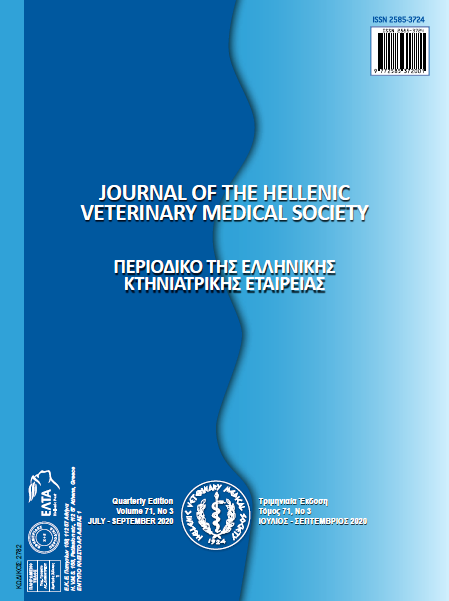Effect of N-acetyl cysteine on the quality of blastocyst formation rate using cultured vitrified murine embryos
Аннотация
Vitrification is the best method for embryo cryopreservation although it increases endogenous reactive oxygen species (ROS) production. N-acetylcysteine (NAC) a free radical scavenger may be used for reducing ROS toxic effects. The aim of the present study is to investigate potential beneficial effects of NAC on the developmental embryo competence applying different culture conditions in vitrified-warmed 2-cell embryos derived in vivo or in vitro. Thus, 2-cell embryos were vitrified or cultured fresh in presence or absence of 1 mM of NAC during: a) the entire embryo culture, b) for 24 hours with NAC at days 1.5 (G1) or 2.5 (G2) and returned to basal embryo culture (KSOM) or c) cultured in the presence of NAC for 12 hours at day 3.5 (G3). Despite NAC addition to fresh or vitrified embryos produced in vivo or by IVF, blastocyst rates remained unchanged. In vitrified-warmed IU or IVF-derived embryos, total cell number varied when NAC was added at day 1.5 although differences were not significant (60.1 ± 1.9 vs. 59.4 ± 1.3 for IU G1 and control respectively; and 59.3 ± 1.6 and 52.6 ± 3.0 IVF G1 and control respectively; mean cell number ± SEM, p > 0.05). It seems that the embryo culture medium supplementation with 1 mM of NAC in the first day after vitrification of development improves blastocyst quality of murine embryos and does not exert any beneficial effect at oyher culture points.
Article Details
- Как цитировать
-
SIGÜENZA, S., ÁLVAREZ, I., & MATILLA, E. (2020). Effect of N-acetyl cysteine on the quality of blastocyst formation rate using cultured vitrified murine embryos. Journal of the Hellenic Veterinary Medical Society, 71(3), 2315–2322. https://doi.org/10.12681/jhvms.25078
- Выпуск
- Том 71 № 3 (2020)
- Раздел
- Research Articles

Это произведение доступно по лицензии Creative Commons «Attribution-NonCommercial» («Атрибуция — Некоммерческое использование») 4.0 Всемирная.
Authors who publish with this journal agree to the following terms:
· Authors retain copyright and grant the journal right of first publication with the work simultaneously licensed under a Creative Commons Attribution Non-Commercial License that allows others to share the work with an acknowledgement of the work's authorship and initial publication in this journal.
· Authors are able to enter into separate, additional contractual arrangements for the non-exclusive distribution of the journal's published version of the work (e.g. post it to an institutional repository or publish it in a book), with an acknowledgement of its initial publication in this journal.
· Authors are permitted and encouraged to post their work online (preferably in institutional repositories or on their website) prior to and during the submission process, as it can lead to productive exchanges, as well as earlier and greater citation of published work.



